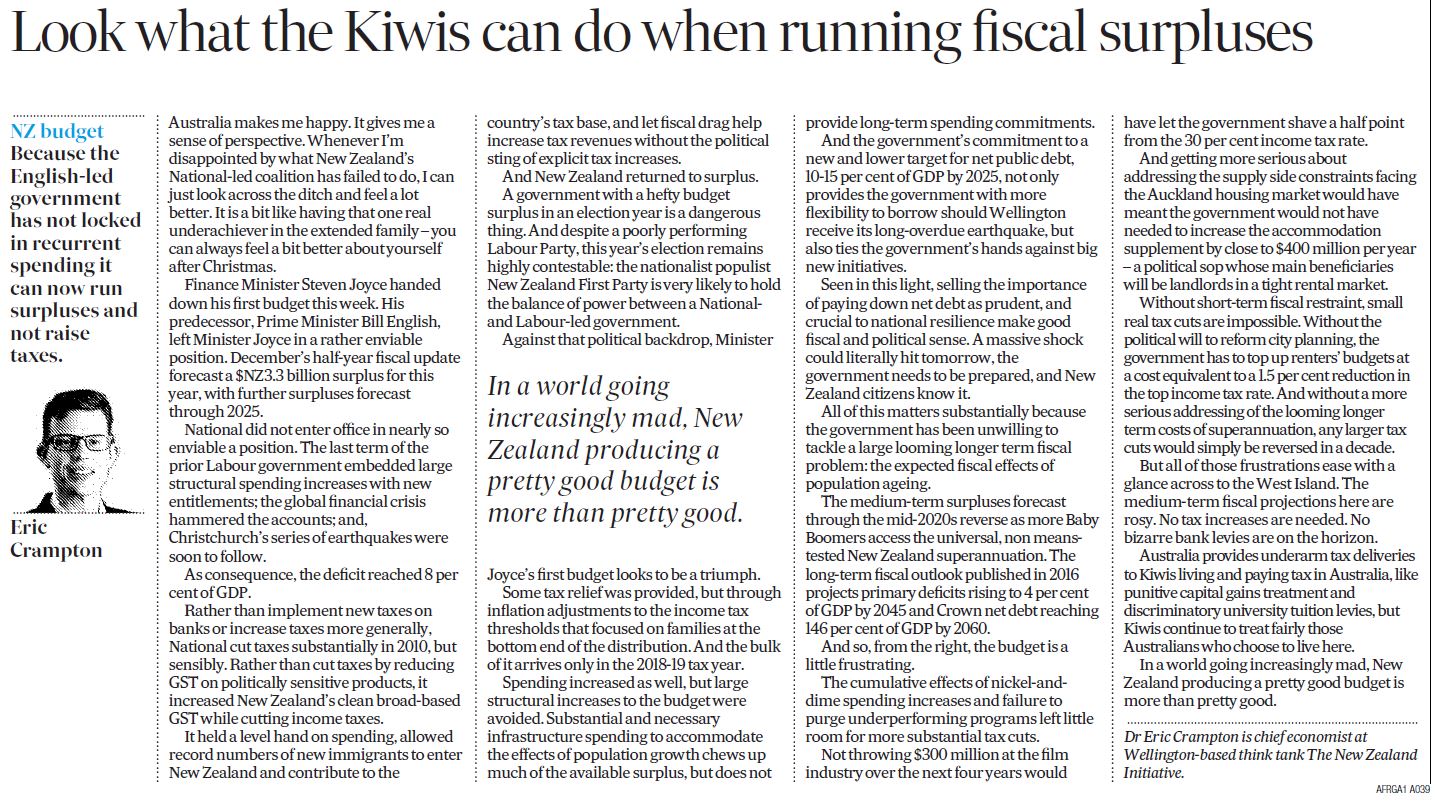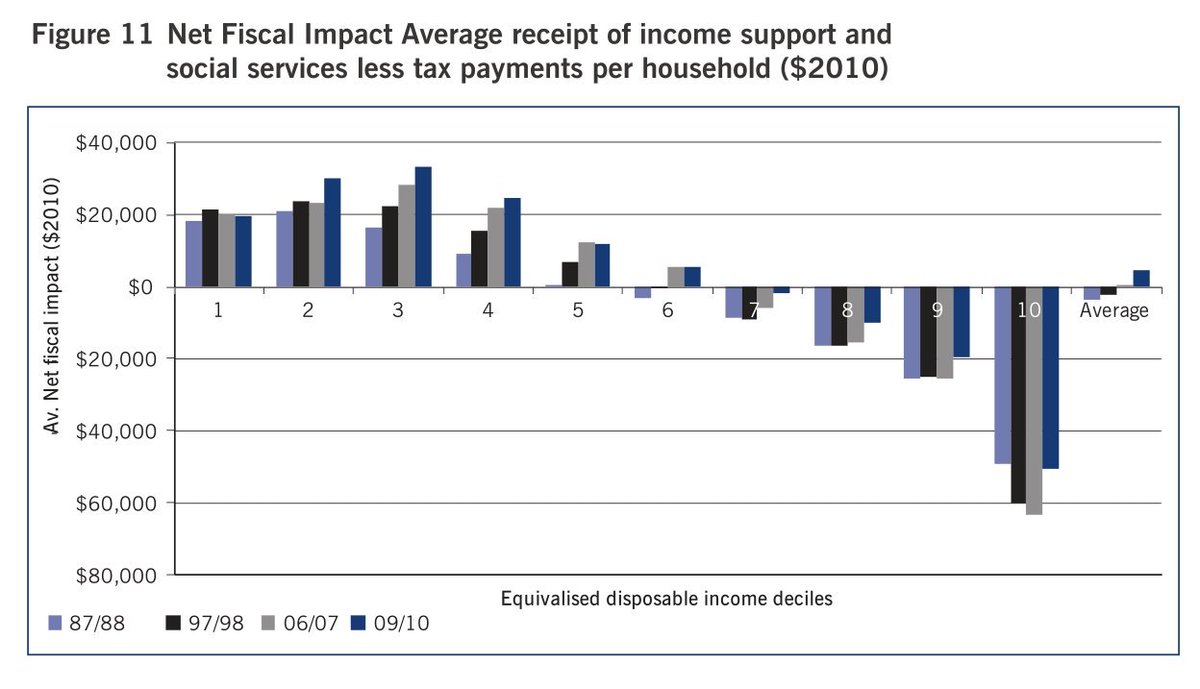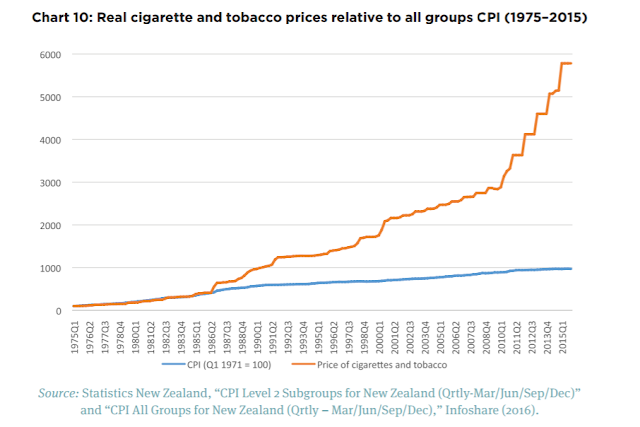Radio NZ's Emile Donovan asked me for comment on the latest Rashbrooke wealth inequality paper on Wednesday last week. I'm not sure whether my reply's been of use there, but I'll copy it below.
Paper summary:
Rashbrooke et al
use several waves of SoFIE data to look at inequality in asset holdings and
mobility across net asset quintiles. They then provide several
cross-tabulations of the data splitting things up by ethnicity, gender, and
age. They show that there is greater mobility across quintiles over longer
periods than over shorter periods, and that there is less movement from the top
and bottom quintiles than from the middle ones. They also demonstrate that the
bottom decile has net debt rather than net assets, and that net debt is
dominated heavily for that cohort by student loan debt.
Commentary:
The paper does not
tell us much that is not already known about wealth holdings. Statistics New
Zealand regularly releases wealth inequality data, though that annual series is
less detailed than that which can be obtained in the (now rather dated) SoFIE
data, and that data is regularly well-canvassed. Credit Suisse similarly puts
together annual estimates of household net asset holdings. Little prior work is
cited in the paper, and little context is provided that would help in assessing
whether the levels of wealth inequality and wealth mobility are higher or lower
than in prior periods, or higher or lower than international benchmarks. What
is the ‘right’ level of mobility or inequality? Rashbrooke appears to come at
it from a perspective that existing levels are too high, but doesn’t provide
any benchmark for assessing what the right level is. I tend to come at it from
a more process-oriented perspective which suggests there is no particular
‘right’ level but rather right processes: if the mechanisms for generating
wealth are fair, then the outcome is fair, but if wealth is generated through
cronyism then resulting outcomes are unfair regardless of the percentage of
wealth held by any particular cohort. But in either case, knowing whether
wealth inequality in NZ is high or low in international context would be
helpful. And the same for mobility.
If we start looking
to international benchmarks:
- Le,
Gibson and Stillman found that inequality in household net worth in New Zealand
is broadly similar to that in most other countries for which data is available.
- Credit
Suisse data suggests that wealth inequality is very low compared to other
countries, but I note that there is a broad range of countries that have
basically the same wealth inequality as New Zealand – I’ve attached that bit
from their report [Table 3-1 here]. That Credit Suisse report echoed findings from Davies et al,
NBER working paper 15508 (2009) showing that wealth inequality in NZ was lower
than all but 19 countries in a dataset of 150 countries.
- Stats
NZ has had the wealth share of the top 10% in NZ as consistent with a
19-country OECD average, and the proportion owned by the top 1$ matching the
OECD average.
More worryingly,
parts of the analysis suggest that the authors have not fully come to grips
with the data they’re presenting. At page 25, they note that the poorest decile
has $1.8b in housing assets but $6.1 billion in mortgage debt. It doesn’t seem
to have occurred to them that this is odd. It is odd because banks tend not to
lend 339% of the value of a house to the poorest households. That is what is
implied by owning $1.8b in housing but having $6.1b in housing debt. LVR
restrictions alone mean they can’t lend more than 80% of the value of the
house, never mind 300%. There is something wrong in that data series. And it’s
not a particular secret either. I talked with StatsNZ about it when they
released their latest round of wealth statistics last year, and I blogged on
it, and I had an NBR column on it. One of the problems is that Stats data can
be years out of date while its mortgage data is up-to-date: that means it’s
easy to get mortgage debt reported well above housing assets in a rising market
because the asset values are a lagged measure – but that can hardly be all of
it because house prices have gone crazy, but not that crazy. We should be
hesitant to draw conclusions from the series because of this problem alone, but
the authors seem not to have even noticed that it’s a problem.
Further, the
cross-tabulations don’t provide anywhere near the value that they could have.
For example, it is well known that Pasifica and Maori communities are
disproportionately younger than Europeans, and that older cohorts are far
wealthier than younger cohorts. That means you need to age-standardise anything
looking at ethnic differences so that you’re not confounding ethnicity effects
with age effects. But, again, the authors seem not to have noticed that this is
a problem. It’s bizarre. They go from showing the differences in wealth by age
to the differences in age by ethnicity, and nothing seemed to click that the
two might be related. A 30 second Google search gave me the
StatsNZ page showing that median age (as of Census 2013) for Europeans is 41 years, but
median age for Maori is 23.9 years and for Pacific peoples is 22.1 years.
Similarly, if the
Maori and Pacifica groups are disproportionately much younger, they’re
disproportionately not going to be moving out of the lowest wealth quintile
because that doesn’t happen until you’re older. A better approach would have
sorted by both ethnicity and age so that they’d be comparing all ethnic groups
restricted to those aged, say, 30-35. Or 50-55. Pick a few and then show the
differences by ethnicity within those age cohorts.
You’d similarly
want age-correction on the mobility statistics. The typical life-cycle has
people starting with net debt, then building wealth, then dis-saving during
retirement. So you get mobility upwards until retirement, then mobility
downwards as assets get consumed. Nothing that the paper puts up tells us how
much of the mobility they find is natural age progression stuff. Again, you’d
want to age-stratify the cohorts so people are measured in each wave against
their position in the life-cycle changes. This likely drives some of their
findings of bunching in the top and bottom quartiles, but it’s impossible to
tell how much without going in and redoing it myself.

What else. The
authors correctly note that student loan debt muddies things. They don’t
explicitly state why. If you buy a house and have a 100% mortgage on it, then
that’s a net zero contribution to wealth: asset matches debt. If you take out a
student loan and have higher expected future earnings, all of the debt counts
against you but the expected future earnings don’t. Trinh Le’s work, cited
earlier, finds that those with university degrees are three times wealthier
than those without university degrees.
Finally, if we’re
thinking about international comparisons, countries like NZ will look more
unequal than they really are as compared to countries with private pension
systems. The wealth inequality stats would count retirement savings. A lot of
retirement savings in NZ is done through the state and NZ Super. The claim that
everyone has on NZ Super is a substantial asset, equally owned across everybody
(albeit with adjustment for differences in life expectancy). Leaving that out makes
wealth in NZ look less equal than it really is.













